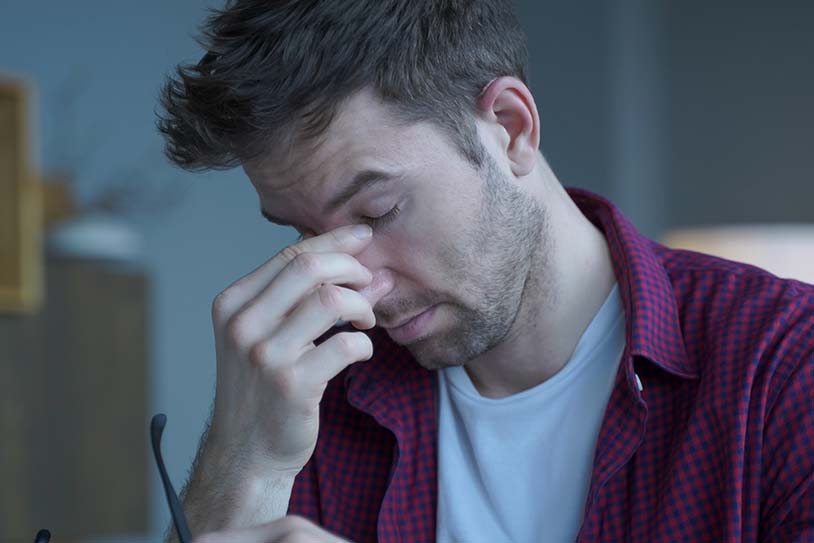
After decades of delving into workplace collaboration and, specifically, the detrimental effects of excessive ineffective collaboration, the medical community became well-versed in the stress that high performers routinely face. However, this was an entirely different beast. What was encountered is stress, indeed, but in a form that neither they – nor individuals impacted – had the vocabulary to articulate. As stressed individuals grappled to describe their experiences, patterns emerged. It was never a single, catastrophic event that triggered their feelings of overwhelm. Rather, it was the relentless accumulation of unnoticed small events – occurring in fleeting moments – that was profoundly impacting their wellbeing.
The Culmination of Subtle Stresses
The medical community categorized these micro-stresses into four primary categories:
- Unrelenting Demands: The ceaseless influx of urgent requests, emails, and messages, creating a sense of perpetual catch-up.
- Invisible Labor: The invisible burden of tasks that go unnoticed and unappreciated, leading to a sense of futility and undervalued efforts.
- Constant Interruptions: The relentless disruptions to focus and workflow, hindering productivity and fostering frustration.
- Emotional Toll: The emotional fallout from challenging interactions, difficult customers, and workplace conflicts, leaving individuals feeling drained and emotionally taxed.
The Silent Saboteur of Wellbeing
Collectively, these seemingly insignificant events can accumulate into a formidable enemy, subtly eroding resilience, motivation, and emotional wellbeing. The insidious nature of these micro-stresses lies in their stealthy operation. Unlike major life events, such as job loss or personal crises, these subtle assaults on our well-being often go unnoticed, gradually eroding our reserves without raising alarm bells.
Recognition is the first step toward addressing this pervasive issue. It is crucial to acknowledge the impact of these micro-stresses and equip ourselves with strategies to mitigate their detrimental effects. By fostering a culture of open communication, promoting work-life balance, and establishing clear boundaries, we can create a workplace that nourishes, rather than depletes, its high performers. Microstress is a subtle yet pervasive form of stress that differs from the more pronounced and identifiable stress we commonly encounter. Unlike overt stress, which stems from readily apparent challenges or setbacks, microstress arises from a multitude of seemingly insignificant daily occurrences. These minor stressors, often overlooked or dismissed as trivial, can accumulate over time, exerting a significant cumulative impact on our wellbeing. In contrast to stress, which often has a clear source, such as a demanding boss or a turbulent work environment, microstress can be more insidious, originating from a variety of everyday interactions and situations. It can manifest from the constant pressure to keep up with a relentless stream of emails or messages, the frustration of dealing with unreliable technology, or the constant interruptions from colleagues or family members.
While microstress may not trigger immediate alarm bells, its pervasive nature can be detrimental to our overall health and wellbeing. The constant barrage of low-level stressors can deplete our emotional reserves, leading to feelings of overwhelm, irritability, and fatigue. Over time, microstress can contribute to a range of physical ailments including: headaches, muscle tension, and sleep disturbances.
Microstress, unlike overt stress, is far less apparent. It stems from everyday challenges that we often dismiss as insignificant or merely another hurdle in our path. Because microstresses occur so rapidly and we are so accustomed to powering through them, we frequently fail to recognize their subtle impact. They appear to be transient, easily manageable, or too trifling to cause lasting harm. Even when we acknowledge microstress, we rarely consider its cumulative effect on our lives. Additionally, microstress is frequently induced by those we care about the most, making it even more difficult to detect.
Work-related microstress can stem from various factors, including:
- Protecting an overlooked team member: Feeling compelled to advocate for an employee who isn’t receiving the recognition they deserve can be a source of stress.
- Carrying the weight of others: When teammates fall short on their responsibilities, you may feel the burden of putting in extra effort to compensate, leading to increased stress levels.
- Managerial overhauls: Last-minute changes to a project after significant effort has been invested can be frustrating and demotivating, causing stress for both you and your colleagues.
- Compromised personal commitments: Regularly missing out on personal engagements, such as weekly tennis games with friends, can lead to feelings of guilt, disappointment, and a sense of declining skills.
These highlight the various ways work can contribute to stress, often stemming from situations beyond your control. Recognizing and addressing these stressors can help you manage work-related stress effectively.
Beneath their seemingly innocuous facade, microstresses, as the name suggests, are often subtle and easily overlooked. Yet, their cumulative impact can be surprisingly significant, gradually eroding our physical and emotional outlook. Despite their seemingly harmless nature, microstresses often masquerade as positive actions or justifiable decisions in the moment. It’s easy to rationalize the momentary discomfort of unintentionally wasting a friend’s time or picking up the slack for a lax coworker when it appears to benefit others. After all, what harm could a few minutes of extra work or a misplaced apology possibly cause? However, the insidious nature of microstresses lies in their tendency to accumulate over time, gradually chipping away at our emotional resilience and overall wellbeing.
While individual stressors may seem manageable in the moment, their cumulative effect can be substantial, leading to a cascade of secondary and even tertiary consequences that can persist for hours or days. This can even trigger microstress in others. For instance, if your teammates fail to complete a crucial task, you’ll be left to compensate for their underperformance and engage in an uncomfortable discussion about the situation. Additionally, you’ll need to ask your partner to take your child to the dentist, despite it being your turn and your child’s preference for your company and the reassurance of their favorite toy. This could also encroach upon your time dedicated to a planned professional development project. While individual microstressors may be difficult to identify, their combined impact is significant.
Microstress often carries an emotional weight that makes it difficult to address. Unlike traditional stressors, which typically stem from obvious antagonists like demanding clients or overbearing bosses, microstress often originates from those closest to us – our friends, family members, and colleagues. This emotional connection intensifies the impact of the stressor. We may harbor feelings of guilt or failure stemming from letting down someone we care about, or we may find ourselves constantly worrying about their well-being. Managers, for instance, may grapple with concerns about adequately mentoring their employees or preventing them from making mistakes in front of colleagues. Whether positive or negative, the emotional investment in these relationships amplifies the impact of microstressors.

In the relentless pace of our hyperconnected world, we’re bombarded with dozens of daily demands, easily succumbing to the illusion that this hectic existence is the norm. “Just let me survive this week,” we reassure ourselves, determined to power through with sheer willpower. “Then I’ll be fine.” However, by passively accepting this constant digital tether, we’ve inadvertently woven our work and personal lives into an intricate tapestry of endless availability. This blurring of boundaries has transformed us into perpetual responders, perpetually accessible via a simple text, call, or video chat.
Each week feels like a grueling marathon, and this relentless cycle stretches on for months. We’re constantly on the brink of burnout, but the source of our exhaustion remains elusive.
To fully comprehend the intricate connection between stress and its repercussions on the brain and body, it is essential to delve into the origins of stress theory. In the 1950s, Austro-Hungarian Canadian endocrinologist Dr. Hans Selye, while conducting his research on animals exposed to injuries or extreme conditions, coined the term “stress” to describe the observed responses. Stress manifests itself at the physiological, psychological, and social levels for many individuals. As an encompassing term, stress typically encompasses both the stimulus (the cause of the stressful experience) and the body’s reaction to the stressor’s effects. Selye defined stress as “the non-specific response of the organism to any demand or pressure.” Recognizing the physiological implications from a mental health perspective, Selye proposed that chronic, unmanaged stress could lead to various health problems due to the body’s inability to adapt effectively to prolonged stressful conditions and the corresponding stressor responses. Notably, even before the advent of psychoneuroimmunology, Selye asserted that:
Significantly, an overwhelming stress (caused by prolonged starvation, worry, fatigue, or cold) can break down the body’s protective mechanisms. This is true both of adaptation which depends on chemical immunity and of that due to inflammatory barricades. It is for this reason that so many maladies tend to become rampant during wars and famines. If a microbe is in or around us all the time and yet causes no disease until we are exposed to stress, what is the “cause” of our illness, the microbe or the stress? I think both are – and equally so. In most instances, disease is due neither to the germ as such, nor to our adaptive reactions as such, but to the inadequacy of our reactions against the germ.
Decades have passed since this seminal research, and understanding has expanded significantly regarding the intricate interplay between the brain, emotions, cognitions, and the nervous system in response to stressors. As medical professionals consistently emphasize, it is not the stressor itself but rather one’s perception and subsequent coping mechanisms that determine whether it will precipitate stress.
The stress-based responses of the brain and body have a profound and multifaceted impact on our well-being. Excessive cortisol levels can exacerbate our reactivity to stress, making it harder to regain composure through logical problem-solving and clear thinking. This underscores the importance of developing effective stress-reduction strategies to strengthen the connection between the prefrontal cortex (PFC) and the amygdala. Learning to manage emotions without becoming overwhelmed by them involves developing the ability to flexibly direct our attention toward or away from emotional stimuli. Grounding techniques, particularly when we’re feeling stressed and emotionally overwhelmed, help us feel anchored, connected, and calm. These techniques involve deliberately shifting our focus to our present surroundings, engaging our senses of touch, taste, smell, or sound, and activating the logical part of our brain to enhance our ability to express ourselves effectively.
Here are several grounding strategies when feeling stressed:
- Take your shoes off and walk slowly around the room, feeling the physical sensation and connection between your feet and the ground with each step. With every movement, feel your toes, soles, and heels connecting to the ground.
- Rock from one foot to another; as you rock, keep notice of your toes, the pad, sides, middle, top, heels, and back of each foot as well as your lower leg, ankles, and calf.
- Describe three things in the room according to their sensory qualities of shape, color, size, smell, etc.
- Read poetry while listening to soothing instrumental music.
- Accomplish a jigsaw puzzle.
- Smell lavender, suck on a peppermint, and/or color a pattern using a coloring book or from abstract art.
- Put an ice pack on your neck or place a cold washcloth on your forehead for some time.
- Drink a cup of tea slowly, deliberately, and intentionally while feeling its warmth and smelling the aroma of its nature. Let each sip swirl in your mouth and flow down your throat as you taste of it.
- Go for a nature walk or somewhere outdoors to be close to nature. Walk barefoot on the grass.
These grounding techniques can help you feel more anchored and present in the moment, enabling you to better assess stressful situations without becoming overwhelmed or distressed. By employing these strategies, you can effectively temper the amygdala’s “fight, flight, or freeze” response, allowing the parasympathetic nervous system to gently guide you back to a state of calm.
“Microstress often carries an emotional weight that makes it difficult to address. Unlike traditional stressors, which typically stem from obvious antagonists like demanding clients or overbearing bosses, microstress often originates from those closest to us – our friends, family members, and colleagues.
By Deepak Santhiraj, Licensed Clinical Social Worker
Recent Posts
Quick Anxiety Relief Techniques You Can Use Anywhere
Anxiety can hit at odd times in the grocery line, before a meeting, or while you’re waiting in the [...]
Overcoming Limiting Beliefs
I found that much of our suffering originates from an invisible source: limiting beliefs. These are deeply held assumptions about [...]
Fueling Optimism
Can you feel it? Just picturing a positive future moment say, an exciting vacation or an anticipated event can instantly [...]



